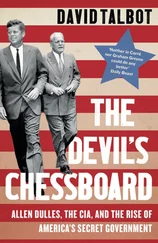Once you were on base, Henderson said, the next step was taking a lead. Most players, he explained, mistakenly assume that you need a big lead. “That’s one of Rickey’s theories: Rickey takes only three steps from the bag,” he said. “If you’re taking a big lead, you’re going to be all tense out there. Then everyone knows you’re going. Just like you read the pitcher, the pitcher and catcher have read you.”
He spread his legs again and pretended to stare at the pitcher. “O.K., you’ve taken your lead; now you’re ready to find that one part of the pitcher’s body that you already know tells you he’s throwing home. The second you see the sign, then, boom, you’re gone.” He lifted his knees and dashed toward second base. After he stopped, he said, “I’ll tell you another of Rickey’s theories.” Nearly all base stealers, he explained, begin their run by crossing their left foot in front of their right, as they turn their bodies toward second. That was also a mistake. “If you cross over, it forces you to stand straight up to get into your stride,” he said. “That’s the worst thing you can do as a runner. You want to start out low and explode.”
As Henderson was conducting his demonstration, members of the opposing team arrived and began to look on. He said that the final touch was the slide. Before Henderson, the great base stealers typically went feet first. Henderson decided that it would be faster-not to mention more daring and stylish-to go in head first, the way Pete Rose, who was never a major base stealer, occasionally did. Yet each time Henderson tried the head-first slide he would bounce violently, brutally pounding his body. Then, one day, while he was flying to a game, he noticed that the pilot landed the plane in turbulence without a single bump. Henderson recalled, “I asked the pilot, I said, ‘How the hell did you do that?’ He said the key is coming in low to the ground, rather than dropping suddenly. I was, like, ‘Dang. That’s it!’” After that, Henderson said, he lowered his body gradually to the ground, like an airplane.
Henderson concluded by saying that if the base runner studied the pitcher, made a good jump, and slid well, he should beat the throw nearly every time. And, if for some reason he was caught, the moment he got back on base he should try to steal again. As Henderson put it to me, “To steal a base, you need to think you’re invincible.”
“Look at your head,” the Surf Dawgs’ hitting instructor said to Henderson one July afternoon. “You’re dropping it down.”
“I know it,” Henderson said, stepping back in the batting cage. He took several more swings, but nothing seemed to be going right. “Come on, Rickey, you’re better than this!” he yelled.
That month, his batting average had plunged from.311 to.247-one of the lowest on the team. In May, he hit only one home run; he had none in June. “He still sees the ball well,” Kennedy, who was leaning against the cage, said of Henderson. “But he doesn’t have the bat speed to get around.”
After a dismal series against the Samurai Bears, an all-Japanese squad that had the worst record in the league, Henderson began staring at the ground in the outfield. Kennedy turned to his coaches and said, “I think we’ve lost him.”
Kennedy, believing that Henderson was ready to quit, later called him into his office. “I understand if you’re through,” Kennedy said.
“No, man, it’s not that. It’s just my damn hitting. I can’t get it straight.”
As the weeks wore on, it became clearer that the defiant mind-set that had made him a great base stealer had, in many ways, trapped him in the Golden Baseball League. He was forever convinced that he could do the impossible. “When I went to play with the Newark Bears, I was sure I would be there for only a few weeks-that a major-league team would call me,” he said. “But one week became two weeks, and now it’s two years and I’m still waiting for that call.”
Trying to improve his average, he started to experiment with his trademark crouch; he stood straighter at the plate, until he was an almost unrecognizable figure. “I remember at the end of my career I began to doubt my ability,” Kennedy said. “I knew what I wanted to do, but my body wouldn’t let me do it. And I called my father and said, ‘Dad, did you ever start to think you weren’t good enough to play this game?’ And he said, ‘I did, and once you do you can never get it back.’”
During the game against the Scorpions in late July, after Henderson had singled and was on first, he got into his three-step lead. I had been travelling with the team periodically throughout the season, waiting to see him steal. The crowd implored him to run, and several times the pitcher threw to first to keep him close. “Here he goes!” a fan yelled. “Watch out!” But, when the pitcher went into his motion, Henderson didn’t move. He stood there, frozen. “What’s wrong, Rickey?” another fan yelled. “Can’t you steal anymore?” On the next pitch, Henderson took his lead again and wiggled his fingers. The pitcher seemed to dip his shoulder when he was about to throw home-his tell-but Henderson didn’t break. After several more pitches, the batter hit a ground ball to short and Henderson was easily thrown out at second. As Henderson returned to the dugout, he shouted, “Goddam cocksucking sun was in my eyes. I couldn’t see a goddam motherfucking bullshit thing.” He sat in the dugout with his head bowed, and for the first time since I had seen him play he didn’t say a word.
Two weeks later, in the middle of August, as the Surf Dawgs’ season was nearing its end, word spread in the clubhouse that the Oakland A’s had just phoned about a player. Kennedy came out and told the team the good news: a Surf Dawg was being called up to Oakland’s AAA farm team. It was Adam Johnson, the pitcher. Afterward, Henderson told me, “I’m happy to see one of the guys get out of the league, to get a chance to move on.” He seemed genuinely glad for him and refused to mention his own circumstances. On another night on the field, however, he pointed to the Surf Dawg logo on his jersey and said, “I never thought I might end my career in this uniform.” I asked if he would retire at the end of the season. “I don’t know if I can keep going,” he said. “I’m tired, you know.” As he picked up his glove, he stared at the field for a moment. Then he said, “I just don’t know if Rickey can stop.”
– September, 2005

After the 2005 season, Henderson quit the Golden Baseball League, though he continued to hope that he would get a call to play again in the majors. In 2009, at the age of fifty, he was inducted into the Hall of Fame. He still insisted, “I can come back and play.”
“A thick, black cloud swirled before my eyes, and my mind told me that in this cloud, unseen as yet, but about to spring out upon my appalled senses, lurked all that was vaguely horrible, all that was monstrous and inconceivably wicked in the universe.”
DR. WATSON, in “The Adventure of the Devil’s Foot”
The Brand
THE RISE OF THE MOST DANGEROUS PRISON GANG IN AMERICA
On a cold, damp December morning in 2002, after weeks of secret planning, the United States Marshals launched one of the most unusual dragnets in the organization’s two-hundred-and-fifteen-year history. As the fog lifted on a small stretch of land in the northwesternmost corner of California-a sparsely populated area known primarily for its towering redwoods-nearly a dozen agents, draped in black fatigues and bulletproof vests, and armed with assault rifles and walkie-talkies, gathered in a fleet of cars. The agents sped past a town with a single post office and a mom-and-pop store, and headed deep into the forest until they arrived at a colossal compound, a maze of buildings surrounded by swirling razor wire and an electrified fence that was lethal to the touch. A gate opened and, as guards looked down with rifles from beneath watchtowers, the convoy rolled inside. The agents jumped out.
Читать дальше












